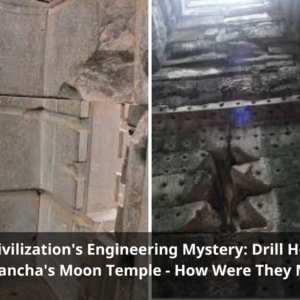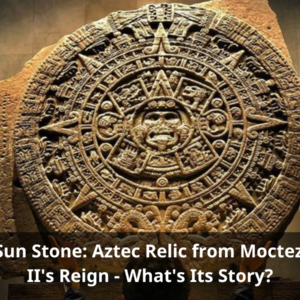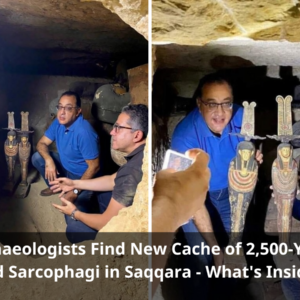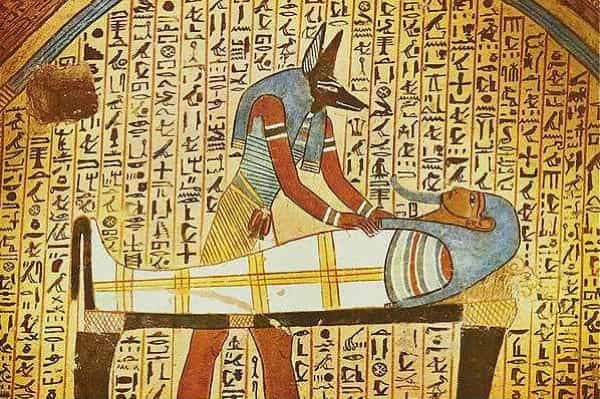
“Anubis is not death, but quite the opposite, he is a god of life”, explains Josep Padró, emeritus professor of Egyptology at the University of Barcelona and president of the Catalan Society of Egyptology, who continues:
“Watch over the dead and helps them to resurrect ”. Hence, he is also the god of mummification, since this practice sought to keep the body uncorrupted for eternity.
According to Egyptian mythology, Anubis was also in charge of leading the dead to the court presided over by the god Osiris, where he had to submit to the judgment that would determine whether or not he was worthy of living eternally in paradise. If he passed the final test, he would revive forever.
Anubis, guide of the dead
The Egyptian priests who performed the mummification of the deceased wore jackal-shaped masks, a sign of the role that the god Anubis had as protector of the dead and guide on the journey they undertook to the Hereafter.
With his unmistakable form halfway between a dog and a jackal, Anubis was one of the gods most closely related to the world of the dead in ancient Egypt.
Worshiped since ancient times as the guardian and lord of the necropolis, Anubis ended up playing a prominent role in the art of mummification.
Anubis, whose Egyptian name was Inpu, emerged in the early stages of Egyptian history as the protector god of the nome (province) Seventeen of Upper Egypt; the Greeks gave the capital of this district the name of Cinopolis, “city of dogs.”
His cult soon spread throughout the country, in places like Lycopolis, Memphis and the sanctuaries of many necropolis. Originally Anubis was also identified with another archaic funerary deity, Imy-wt, “the one in his bandages.”
Iconography
In the iconography, Anubis is represented with the head of a jackal and a human body, or as a reclining black-furred dog with a watchful head.
The black is because that was the color of silt, the dark clayey mud that the Nile, retreating after the flood, left behind in the flooded field, making it fertile and ready to be plowed and sown. For this reason, the color black was associated with resurrection and fertility, with renewed life.
The cemetery watcher
One of the most frequent epithets of the god Anubis was that of “Lord of the sacred land”, that is, of the necropolis, as he was worshiped as a guardian and watchman of cemeteries.
The ancient Egyptians were surely scared to see numerous hungry jackals and dogs prowling around the poorly guarded necropolis and full of tombs everywhere, because they believed that the body had to be preserved in order to survive in the Hereafter for all eternity.
Hence they sought the protection of the black jackal-headed god.
Throughout the Old Kingdom (2700 BC-2200 BC), Anubis held a privileged position in the Egyptian pantheon, as the great god of the dead and judge of the dead.
Although originally, as a funerary god, he was mainly linked to the pharaoh, little by little he became the universal god of the dead.
On the walls of many Old Kingdom tombs we find written prayers for the survival of the deceased after death, all of them addressed to Anubis in his capacity as the god in charge of guiding the soul of the deceased on its journey to the underworld.
This situation changed during the Middle Kingdom (2200-1800 BC), when the role of the main divinity of the underworld was given to Osiris.
Anubis, for his part, was limited to figure as the guide of souls, guardian of the necropolis and, particularly, as a god embalmer of bodies.
This last function has a lot to do with the myth of the death and resurrection of Osiris, in which Anubis also plays a prominent role that was reflected in the mummification rituals.
The myth narrates the adventures of the wise King Osiris, who had to face his jealous and evil brother Set, who longed to seize the throne of Egypt.
One of the most tragic moments in the narrative occurs when Set tears Osiris’s body into fourteen parts and scatters the fragments throughout Egypt in order to prevent Isis, Osiris’s faithful wife, from ever finding them again.
But Isis, helped and accompanied by her sister Nephthys and the god Anubis, manages to recover one by one the scattered pieces of her beloved and deceased husband.
Once the fragments are gathered, the jackal god Anubis collects them one by one, joining them together and making a mummy; the first in the entire history of Egypt.
Recomposed the body of Osiris, Isis makes him magically revive: the goddess lies on the restored body of her husband. As a result of this union, a boy named Horus will be born who when he reaches maturity will fight against his uncle Set, avenging the death of his father and seizing the throne of Egypt.
For his part, Osiris, now reborn, abandons his family and retires to the Hereafter, where from that moment on he will begin to rule as god-king of the dead.
Anubis, the mummifying god
Anubis’ important and prominent role in the mythical mummification of Osiris made him the quintessential embalmer in the eyes of the ancient Egyptians.
One of his main epithets is “Lord of the secrets of embalming”, since he developed the rituals of mummification to preserve Osiris. Since then he was responsible for caring for the deceased during the embalming process.
In Egyptian iconography he is usually depicted standing next to the bed of the deceased, bent over the mummy and manipulating it.
Anubis thus became the patron saint of embalmers and received the titles of “Head of the Divine Pavilion” or “Head of the House of Purification” – where the mummification process of a corpse was carried out – and “The one on the mummy’s bandages.”
On the techniques and processes of mummification of ancient Egypt we have information provided by Herodotus, the great Greek historian of the 5th century BC, and Diodorus of Sicily, who four centuries later made a description of the caste of priests dedicated to the task.
Herodotus reports that there were different types of embalming depending on the importance of the deceased and his purchasing power.
When a person died, their relatives took the body to the “House of Purification”, where it was subjected, for 70 days, to a meticulous mummification process adjusted to very well regulated rites.
The persons in charge of this task were specialized priests who proceeded to prepare the corpse according to the expense that the family of the deceased was willing to pay.
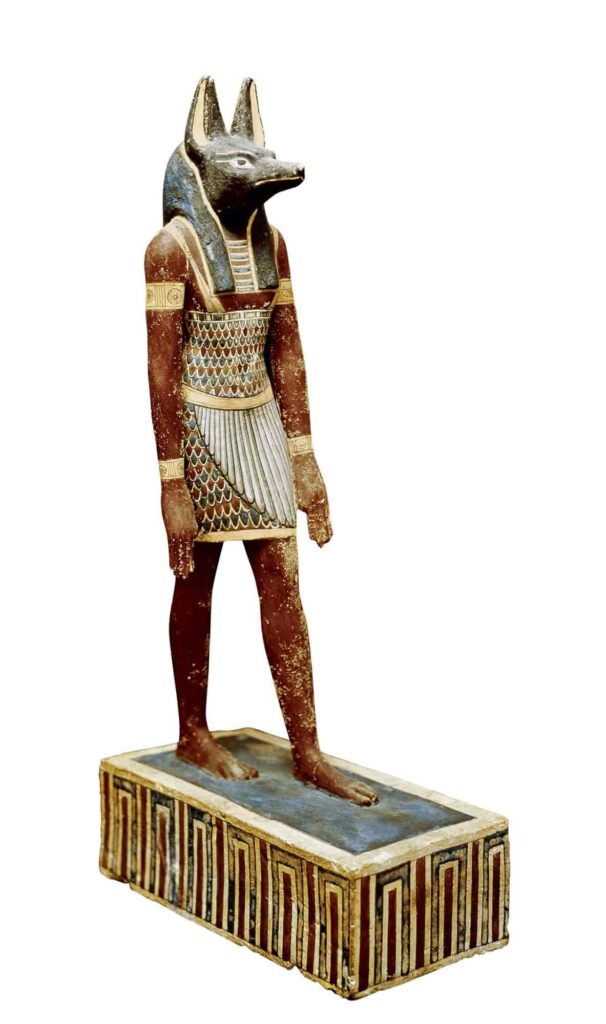
Anubis, guide of the dead, Statuette of the god Anubis in wood and stucco, 1st century BC Roemer-Pelizaeus Museum, Hildesheim.
Anubis masks
During the embalming process, the priests had to wear jackal masks, in order to personify Anubis, and repeated invocations to the god.
During the final part of the process, which consisted of the bandaging and placement of protective amulets, the priests of Anubis recited some magical-religious texts.
Finally, the mummy was placed inside a wooden coffin to proceed with the burial ceremony.
It is very likely that the priest who officiated this burial ceremony also personified the god Anubis, since in different funerary papyri he appears represented while holding the mummy at the entrance of the tomb.
The sem priest (funerary priest) then purified the corpse and proceeded to the ritual of the “Opening of the mouth.” He pronounced magic words and played, with the help of an instrument (an adze), the mouth, eyes, nose and ears of the mummy.
The deceased could thus regain his senses to contemplate the world of the living and receive the offerings that were intended for him.
The last step consisted of placing the mummy inside the burial chamber and sealing the tomb, where the grave goods necessary for the afterlife had already been arranged.
Thus the final moment was reached: the final judgment.The soul of the deceased was led by Anubis to the courtroom of Osiris, where a trial took place.
The deceased had to pass the test of “psychostasia” or “weighing of the soul.” In the center of the room stood a balance, on one of whose plates Anubis placed the heart of the deceased, seat of consciousness and memory, while in the other he placed the pen or a figurine of Maat, the goddess of justice and the truth.
The court was made up of 42 gods, before whom the deceased proceeded to recite what is known as “the negative confession”, in which he enumerated, one by one, the 42 sins that he had not committed.:
«Here I am! I know you! I have not caused hunger. I have not killed. I have not mistreated … ».
If the scales were thrown out of balance because of his sins, and the heart weighed more than the feather, the deceased was swallowed by the “Devourer“, Ammit, a terrible monster half crocodile half hippo who denied him the desired eternity.
If, instead, it was “justified”, Osiris allowed that person to be admitted to the Hereafter.
News
Unveiling the Ingenious Engineering of the Inca Civilization: The Mystery of the Drill Holes at the Door of the Moon Temple in Qorikancha – How Were They Made? What Tools Were Used? What Secrets Do They Hold About Inca Technology? And What Does Their Discovery Mean for Our Understanding of Ancient Construction Methods?
In the heart of Cusco, Peru, nestled within the ancient Qorikancha complex, lies a fascinating testament to the advanced engineering prowess of the Inca civilization. Here, archaeologists have uncovered meticulously angled drill holes adorning the stone walls of the Door…
Unveiling the Sun Stone: Aztec Relic from the Reign of Moctezuma II (1502-1520) – What Secrets Does It Hold? How Was It Used? What Symbolism Does It Carry? And What Does Its Discovery Reveal About Aztec Culture?
In the heart of Mexico City, amidst the bustling Plaza Mayor, lies a silent sentinel of ancient wisdom and artistry – the Sun Stone. This awe-inspiring artifact, dating back to the reign of Moctezuma II in the early 16th century,…
Uncovering the Past: Rare 1,000-Year-Old Copper Arrowhead Found – Who Crafted It? What Was Its Purpose? How Did It End Up Preserved for So Long? And What Insights Does It Offer into Ancient Societies?
In the realm of archaeology, every discovery has the potential to shed light on our shared human history. Recently, a remarkable find has captured the attention of researchers and enthusiasts alike – a rare, 1,000-year-old copper arrowhead. This ancient artifact…
Unveiling History: The Discovery of an Old Sword in Wisła, Poland – What Secrets Does It Hold? Who Owned It? How Did It End Up There? And What Does Its Discovery Mean for Our Understanding of the Past?
In a remarkable archaeological find that has captured the imagination of historians and enthusiasts alike, an old sword dating back to the 9th-10th century AD has been unearthed in Wisła (Vistula River) near Włocławek, Poland. This discovery sheds light on the rich…
Unveiling the Hidden Riches: Discovering the Treasure Trove of a Notorious Pirate – Who Was the Pirate? Where Was the Treasure Found? What Historical Insights Does It Reveal? And What Challenges Await Those Who Seek to Uncover Its Secrets?
A group of divers said on May 7 that they had found the treasure of the infamous Scottish pirate William Kidd off the coast of Madagascar. Diver Barry Clifford and his team from Massachusetts – USA went to Madagascar and…
Excavation Update: Archaeologists Unearth Massive Cache of Unopened Sarcophagi Dating Back 2,500 Years at Saqqara – What Secrets Do These Ancient Tombs Hold? How Will They Shed Light on Ancient Egyptian Burial Practices? What Mysteries Await Inside? And Why Were They Buried Untouched for Millennia?
Egypt has unearthed another trove of ancient coffins in the vast Saqqara necropolis south of Cairo, announcing the discovery of more than 80 sarcophagi. The Tourism and Antiquities Ministry said in a statement that archaeologists had found the collection of colourful, sealed caskets which were…
End of content
No more pages to load
